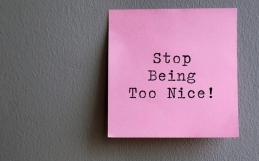Almost everyone has experienced the feeling of discomfort when their inner values do not align with their actions. This universal struggle can manifest in various aspects of our lives, such as addiction, compulsive behaviors, or losing our temper, and can impact our mental well-being and relationships. The core issue is a dissonance between our actions and our ideal self-image.
We may find ourselves in scenarios where our behaviors do not align with our aspirations—for instance, an executive who values work-life balance yet works 80-hour weeks, ignoring their own health and family; a parent who values patience and understanding but snaps at their child in a moment of stress; or an individual who aspires to live healthily but succumbs to the lure of junk food or cigarettes during moments of weakness. These examples highlight a common yet seldom discussed human experience.
This misalignment can have significant ramifications, including straining relationships, hindering personal and professional growth, and contributing to a cycle of self-sabotage. The emotional and psychological toll of feeling out of control and unable to live up to our own standards can be deeply damaging. The shame, guilt, and frustration accompanying these feelings often keep us silent, perpetuating a cycle of negative behavior and self-critique.
One reason for this silence might be the impulsive or reactive nature of our actions. Admitting to these behaviors can feel like exposing a weakness or flaw that society tells us should be kept hidden. Additionally, acknowledging this gap requires confronting uncomfortable truths about ourselves—a process that’s as daunting as it is necessary for growth.
Recognizing and addressing these behaviors within the context of our family systems can provide a pathway to change. By understanding the origins of our reactions and behaviors, we can begin to unpack the layers of our actions and work toward realignment with our beliefs.
Research supports the idea that awareness, coupled with targeted strategies such as mindfulness, cognitive-behavioral techniques, and open communication, can facilitate this process. These methods help us pause, reflect, and choose responses that align more closely with our values, even in the face of old habits or immediate impulses.
The key to navigating this inner conflict lies in compassion for ourselves and others. By developing a culture of openness and understanding around the challenges of aligning our beliefs and behaviors, we can begin to break down the barriers to conversation and change. Acknowledging that this struggle is a shared aspect of the human experience can empower us to speak openly, seek support, and take actionable steps toward the harmony between our internal world and our external actions.
For instance, consider the case of Alex, who grew up in a household where success was measured by career advancement and financial stability. Despite achieving significant success in a corporate job, Alex felt unfulfilled and yearned for a career in the arts. This tension between Alex’s values and the path chosen under familial and societal pressure led to internal discord. Recognizing this disconnect, Alex began to employ mindfulness techniques and openly conversed with family members about personal values and happiness. Through this process, Alex realized the importance of aligning actions with inner beliefs and boldly decided to transition into a career in art. This shift brought fulfillment and happiness to Alex and inspired family members to reflect on their own values and aspirations.
This example illustrates the powerful transformation that can occur when individuals confront and reconcile the gap between their actions and beliefs. By fostering awareness, practicing compassion, and seeking alignment with one’s values, creating a life that feels authentic and fulfilling is possible. Encouraging open dialogue about such experiences can help demystify the process, making it more accessible for others to undertake similar journeys of self-discovery and change.
While the gap between our inner values and actions may be common, it doesn’t have to define who we are. Through reflection, understanding, and deliberate practice, we can bridge the divide and move closer to living as our most authentic selves.
Did you enjoy reading this article?
Once a week I send out a newsletter with new articles and unique content for readers. It is my way of staying in touch with you and giving you free advice based on some important topics.
Click here to sign up for my newsletter.





